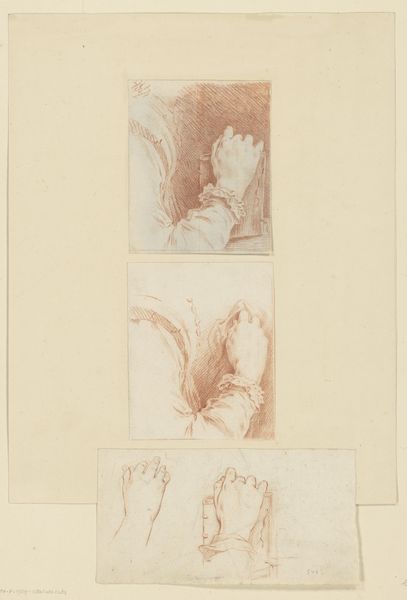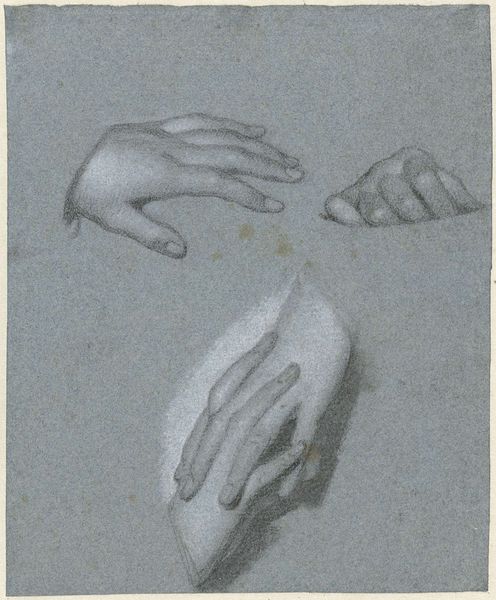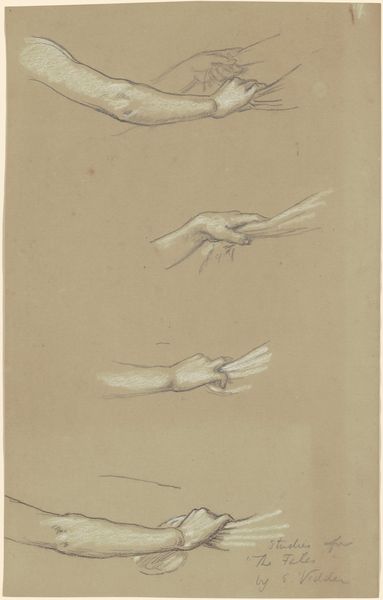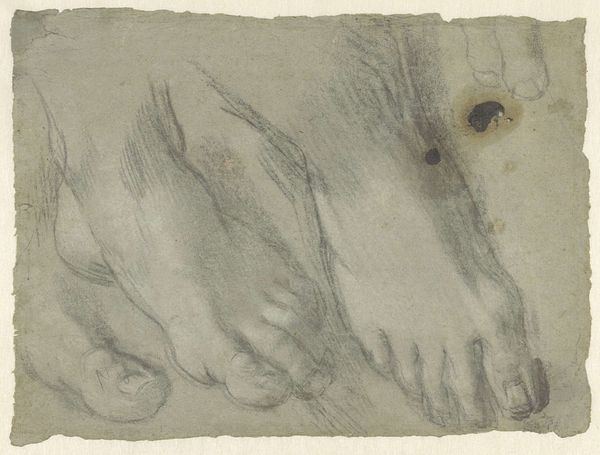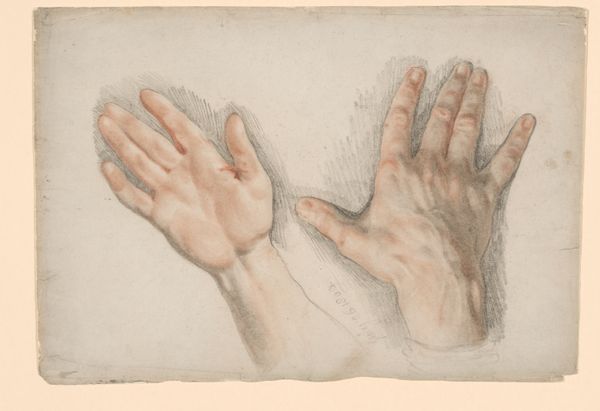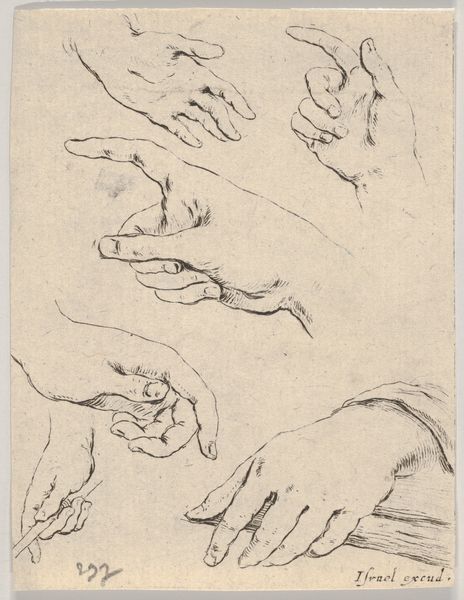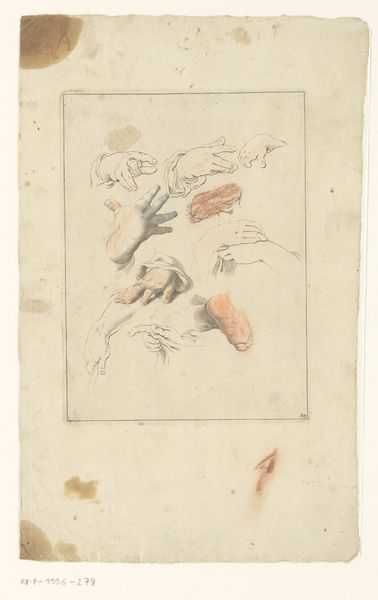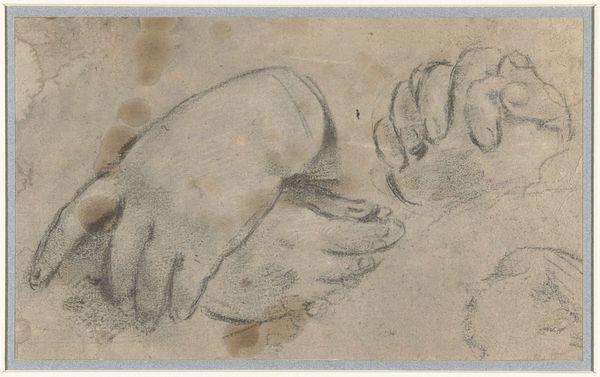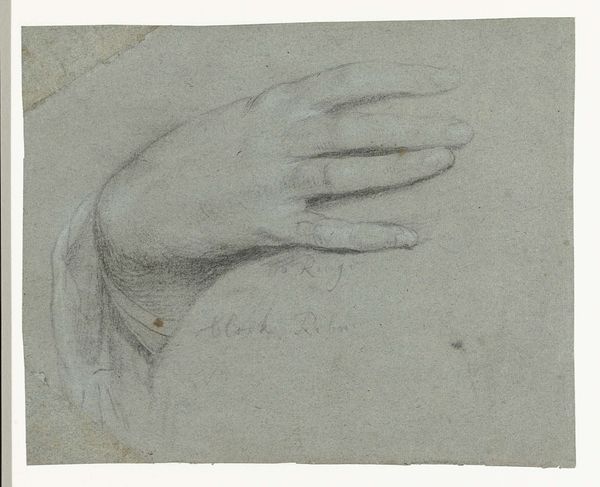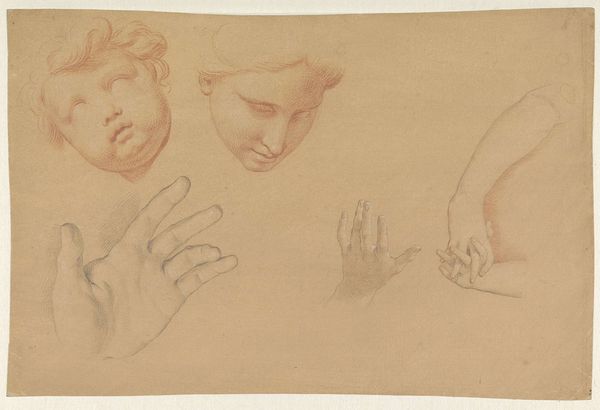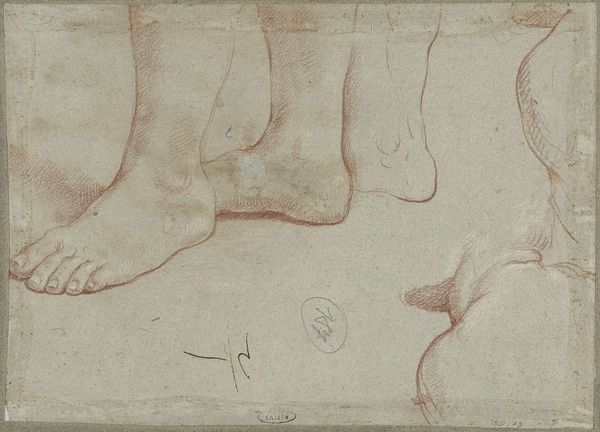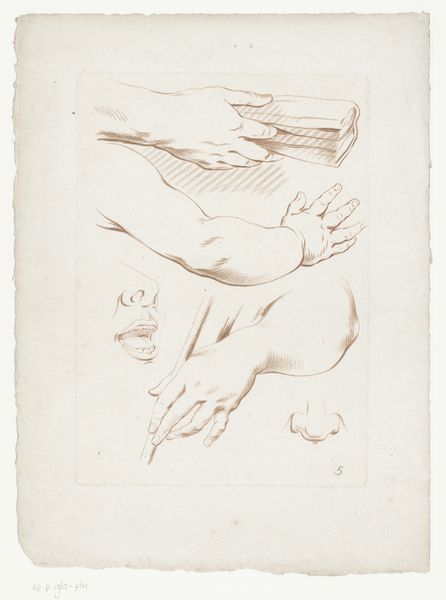
a. Hands of Saint Remi (lower register); b. Head of Saint Clotilde (upper register); c. Head of Saint Clotilde (lower register); d. Head of an Angel (upper register); e. Hand and Sleeve of Saint Remi 1830 - 1875
0:00
0:00
drawing, pencil
#
portrait
#
drawing
#
16_19th-century
#
head
#
pencil
#
academic-art
#
profile
Dimensions: a. 18 7/16 x 11 11/16 in. (46.8 x 29.6 cm); b. 2 7/8 x 2 5/16 in. (7.4 x 5.8 cm); c. 3 11/16 x 3 5/8 in. (9.3 x 9.1 cm); d. 2 1/8 x 2 1/4 in. (5.4 x 5.8 cm); e. 7 1/8 x 4 13/16 in. (18.1 x 12.3 cm)
Copyright: Public Domain
Editor: So, this drawing by Isidore Pils, made sometime between 1830 and 1875, is titled "Hands of Saint Remi" and features studies of other figures. It’s rendered in pencil and it feels almost like a preparatory sketch page, pinned to a studio wall. What draws your eye, and how would you interpret this collection of images? Curator: I’m immediately interested in Pils's choice to isolate these specific body parts—hands and heads. In the 19th century, there was a huge push to define and categorize human characteristics, especially through physiognomy. Does the meticulous detail in rendering these features reflect a broader social interest in idealizing or even categorizing types of individuals? What can we learn about the politics of representation, or the cultural ideas surrounding Sainthood, just by looking at these disembodied features? Editor: That's fascinating, I hadn’t considered the cultural context of physiognomy! So, you're suggesting these drawings are not just about artistic skill, but potentially about a deeper societal trend? Curator: Exactly! And it raises questions about the role of the artist and the academy. How does academic training influence the representation of historical figures like Saint Remi and Saint Clotilde? The drawing also shows signs of being studies for another, possibly larger and commissioned, painting. Think about how the artist carefully selected which traits of these figures to depict for a public audience. Editor: It makes me wonder how different the final work would look compared to these initial sketches and how the reception would change given Pils's historical, social, and artistic milieu. Thanks, I will never look at sketches in the same light now. Curator: My pleasure, hopefully our discussion prompts us to further appreciate and question art’s role in shaping cultural perceptions!
Comments
No comments
Be the first to comment and join the conversation on the ultimate creative platform.
